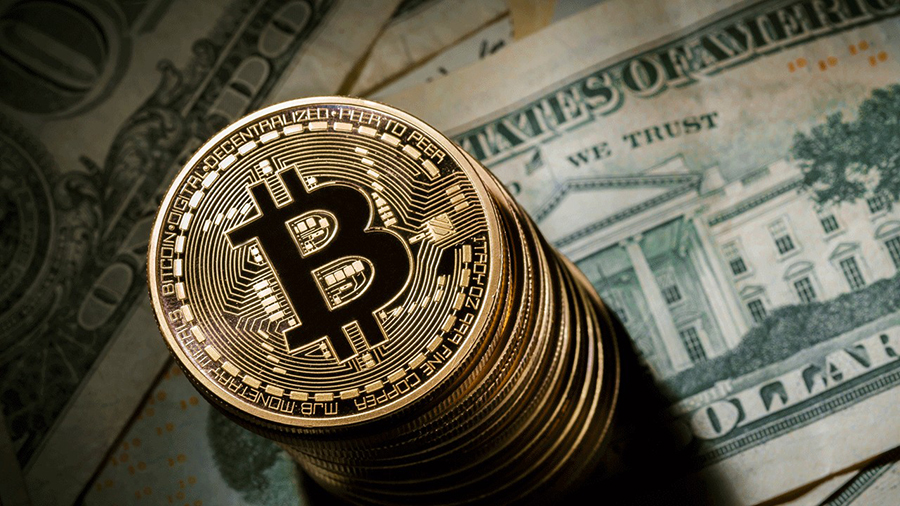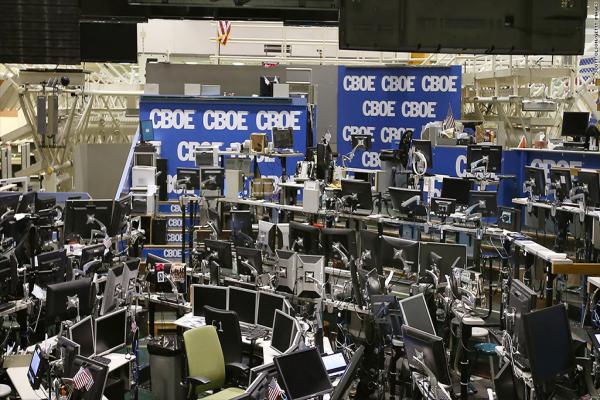A friend of mine, during the devastating Bitcoin Cash computing power war, casually remarked: “ButBitcoin is now trading cheaper than spending onmining? Isn't there a minimum price threshold? ”Unfortunately, cryptocurrencies do not have a lower threshold - just like an upper threshold. Let's try to parse this question a little more.
Trying to articulate what drives pricescryptocurrencies in one direction or another - it's like predicting the future from tea leaves: you can see anything. Bitcoin mining costs vary depending on the country, and the numbers that we have are at best only a rough estimate. There is no centralized statistical office or auditor measuring the cost of electricity and equipment and receiving a figure that accurately represents the costs of mining Bitcoin - or any other cryptocurrency. But, based on available estimates, analysts suggested that the minimum price of bitcoin is somewhere between $ 4,500 and $ 6,500. However, these estimates do not take into account that the marginal cost of simply disconnecting Bitcoin mining machines is zero. There are only capital costs pre-paid for mining equipment. If we add to this that cryptocurrency miners could already depreciate their equipment during previous cycles of price growth, then, in fact, there is actually no lower threshold - Bitcoin miners can simply turn off their equipment and stop consuming electricity.

To this should be added the observation that forThere is no buyer of last resort for Bitcoin. Due to decentralization, there is no single authority capable of maintaining the value of Bitcoin relative to the dollar. In the case of government currencies, countries usually (depending on their end goal) absorb excess amounts of their currency to prevent depreciation, which makes imports prohibitively expensive. Likewise, when a nation's currency rises, exports become prohibitively expensive, so central banks begin printing money(one way - issuing loans to banks through a discount window)in the hope that increased supply will tame the currency's rise. The smartest economists and central bankers are working to strike a delicate balance. But Bitcoin does not enjoy this privilege.
In addition, investors now have many reasonsto choose dollars. From the consequences of Brexit to Italy’s potential fiscal crash, Europe looks extremely volatile. However, this continent is home to two major world currencies - the euro and the pound, which have recently lost in value against the dollar. The Japanese yen, complementing the basket of the world's most sought-after currencies, has succeeded only slightly better. Despite the March peak against the dollar, as the Japanese economy showed the first fruits of a cool reversal, the yen returned more or less to the same level at which it started the year. Gold, usually seen as a safe haven in times of economic instability, has lost its attractiveness as investors preferred stocks and other risky investments in search of better returns, but now that volatility has returned, investors are again running towards the dollar.
However, every crisis is slightly different, sothe coming crisis - which, apparently, many now expect - will also be unlike previous ones. There are already a number of signs indicating an increase in volatility(typical harbinger of crisis).

With the current global economic system,whether we like it or not, the dollar dominates. Whether you want to buy frozen orange juice or freon, global prices for goods are usually set in dollars. Even the value of cryptocurrencies is measured in dollars. And since dollars are the grease that the current global system is running on, dollar surges can be one of the signs of impending economic instability. One way to measure this volatility is to determine the value added that banks charge for exchanging one currency for another in the derivatives market. At the peak of the crisis, financial institutions and investors are in a hurry to get dollars in order to finance dollar-denominated obligations, such as commercial paper or trading accounts. The margin in such cases usually grows, especially towards the end of the fiscal year, when banks want to reduce the amount of dollar derivatives on their balance sheet on the eve of the reporting season. But if these figures begin to distort out of the reporting season, this may indicate that banks want to reduce their liabilities and go into dollars - and perhaps this is what is being observed now.

Technological stocks and so-called stocksFAANG (Facebook, Apple, Amazon, Netflix and Google) also fell from their highs as traders cut their positions on the favorites of the stock market and their prices began to be questioned.
Do not expect volatility to bypasscryptocurrency side, including bitcoin. Even if FAANG stocks cannot avoid hard sales, then who said that cryptocurrencies, also closely related to technology, will bypass this?
However, drawing parallels between them is premature.
Cryptocurrency markets are still relatively youngand it is believed that manipulation is common here. How is all this chaos worth considering? Is this a chance for smart investors to grab onto a particular cryptocurrency that is bullish?
There are a number of reasons to exercise caution insimilar periods of uncertainty. In order for cryptocurrency prices to recover, dollars must flow into them, and these dollars must come from somewhere. When stock and real estate prices rose steadily, investors had little reason to invest in a new and extremely speculative asset class. And since the Fed’s increase in interest rates has become a reality, financing costs are rising. Against this background, investors can decide that it is prudent to hold on to cash, but not for any cash, but for the good old dollar. Despite stock market fraud, the US economy continues to grow slowly. Unemployment is at record low levels, and there are first signs of wage growth - which usually indicates inflationary pressures. And since investors now (more than ever before) are beginning to doubt the goals of profit and income, as well as prices, it should not be surprising that dollars are leaving cryptocurrencies - still a speculative investment target.

Given these macroeconomic considerations, an index fund approved by the Securities and Exchange Commission or an increase in adoption is unlikely to lead to a larger influx of funds into cryptocurrencies.
Does this mean that it is time for cryptocurrency supporters to give up and return to normal work? Unlikely.
Not a day goes by without mention of cryptocurrencies inone or another major financial publication, such as The Wall Street Journal, CNBC, Forbes, Fortune, Bloomberg or Financial Times. On the sidelines of the not-so-concluded Singapore Fintech Festival, none other than IMF Managing Director Christine Lagarde advocated for central banks to issue their own digital currencies. Stock exchanges from Singapore to Sao Paulo are considering tokenizing shares to speed up trades. Logistics companies are testing blockchain-based tracking systems, and insurance companies like MetLife are even experimenting with their own smart contracts. Dozens of financial technology companies are quietly working on custodial solutions for trading cryptocurrencies, and some more publicly, as in the case of Fidelity Investments, one of the world's largest asset managers. The Chicago Board Options Exchange and the Chicago Mercantile Exchange were among the first major exchanges to offer Bitcoin derivatives trading. Regardless of prices, the amount of human and financial resources invested in this industry is staggering - especially considering the possibility of cryptocurrencies falling in price(at least in the short term).
Another problem is bias.confirmation. Bitcoin and its relatives only really came into the public spotlight when the price reached $20,000 in late 2017. And it's understandable that people flocked to it - everyone likes a winner. But what about the fact that not that long ago (and it really wasn't that long ago) Bitcoin was trading at $200? With any asset, not just digital, how you view it is closely related to the income generated from it. It's natural to avoid something that has given you significant trouble, and the media abounds with sentimental stories of being ruined by cryptocurrency speculation. But every coin (no pun intended) has two sides, and there have been plenty of winners in the crypto space as well. Unfortunately, given the relative immaturity of the cryptocurrency markets, the charts and pricing here are a bit like fortune telling. It would be easier if someone could assure:“Calmly, we have already seen this”- but, whether you like it or not, it is impossible. We just do not have enough empirical data, historical prices or correlation matrices to say when the bottom or peak has been reached. As Winston Churchill said:
“This is not the end. This is not even the beginning of the end. But perhaps this is the end of the beginning. ”
These words are now more relevant for cryptocurrency markets than ever.
</p>


